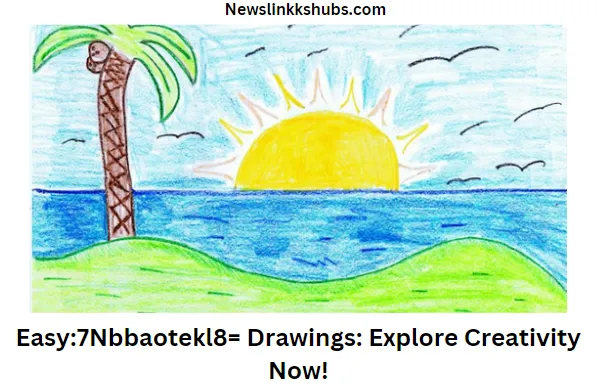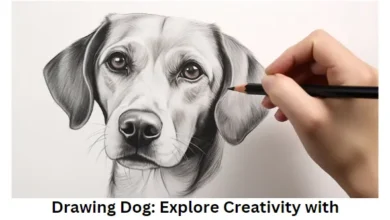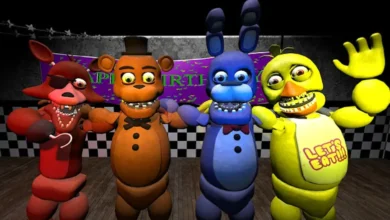Easy:7Nbbaotekl8= Drawings: Explore Creativity Now!

The phrase “Easy:7Nbbaotekl8= Drawings” seems to encode a message or a specific search query. Deciphering this code could reveal a particular set of drawings or a related topic. In the world of digital content, clear communication is critical, especially when it comes to search queries and SEO optimization. The sequence “Easy:7Nbbaotekl8= Drawings” might not make immediate sense to most people, but for those in the know, it could signify a specialized field or a unique identifier for a collection of images or sketches.
Such cryptic expressions often pique users’ curiosity, leading them to delve deeper into the subject. Content that successfully decodes or explains these terms can attract a dedicated audience seeking clarity or insight into a niche subject. By providing concise, easy-to-understand explanations, content creators can enhance user experience and improve search engine rankings, making the information more accessible and easier to find for those intrigued by such enigmatic phrases.
Contents
Introduction To Easy Drawings
Easy drawings offer a fun way to express creativity. They don’t need fancy skills. Everyone can start drawing with simple shapes. These drawings form a solid foundation. They boost confidence and prepare you for complex artwork.
Famous Simple Artworks: Throughout history, many renowned artists have created famous simple artworks that resonate with simplicity and elegance. Artists like Pablo Picasso with his ‘One-Line Drawings’ and Henri Matisse with his ‘Cut-Outs’ show how minimalism can create impactful art.
The Allure Of Simplicity
Simplicity in art has a unique charm. It invites beginners to try without fear. Simple lines and shapes create recognizable images. The allure lies in the achievable beauty of minimalism.
Benefits Of Starting Simple
- Boosts Confidence: Quick wins encourage new artists.
- Improves Skills: Basic shapes are building blocks for advanced drawings.
- Encourages Practice: Less daunting tasks mean more drawing.
Tools Of The Trade
Creating Easy:7Nbbaotekl8= Drawings starts with the right tools. Whether you’re a beginner or a seasoned artist, the materials you use can significantly influence your work’s outcome. Let’s dive into the essentials for bringing your artistic vision to life.
Pencils, Pens, And More
Pencils lay the foundation for most drawings. They come in various grades, from hard (H) to soft (B). Soft pencils (B) are best for shading, while hard (H) pencils excel in fine lines. Every artist needs a good eraser. It fixes mistakes and lightens areas for highlights. Pens offer permanence and precision. Like fine lines, ink pens create clean lines and are perfect for final details.
- Graphite Pencils: Ideal for sketching and shading.
- Coloured Pencils: Add vibrancy to your drawings.
- Ink Pens: For crisp, permanent lines.
- Brush Pens: Blend ink for a painterly effect.
Art Supplies Stores: When starting, consider exploring local art supplies stores or online platforms like Amazon or Blick Art Materials for high-quality tools. Brands like Faber-Castell, Prismacolor, and Sakura are excellent choices for beginners.
Digital Vs. Traditional Mediums
Choosing between digital and traditional mediums depends on your style and convenience. Digital art uses software and devices like tablets and styluses. It offers to undo buttons and endless colours. Traditional art involves physical media like paper and canvas. It gives a tangible feel to your work.
| Digital | Traditional |
| Efficient editing | Hands-on experience |
| Vast colour palettes | Physical art pieces |
| Portable tablets | Varied textures |
Digital Drawing Tools: Popular drawing software like Adobe Illustrator, Procreate, and Clip Studio Paint offer intuitive interfaces for beginners. These tools have various features that simplify the drawing process and provide endless creative possibilities.
Finding Inspiration
Every artist starts with a blank canvas. Inspiration is the spark that ignites creativity. It turns simple ideas into amazing drawings. Let’s explore where to find it!
Everyday Objects
Look around you. Everyday items hold hidden beauty. They’re perfect for practice and can lead to masterful art.
- Coffee mugs: Study their shapes and shadows.
- Books: Capture their stacked forms.
- Shoes: Notice the textures and lines.
Nature And Surroundings
Nature is an endless source of visual treasures. It offers diverse patterns, colours, and scenes.
| Element | Inspiration |
| Leaves | Study their veins and edges. |
| Clouds | Observe their fluffy shapes. |
| Rivers | Notice the flow and reflections. |
Art Inspiration for Beginners: Platforms like Skillshare, Udemy, and YouTube offer numerous online drawing classes tailored for beginners. These resources provide structured lessons and inspiration to kickstart your drawing journey.
Basic Techniques To Master
Want to create superb drawings? Start with these basic techniques. They’ll help you bring your ideas to life. Learn to sketch and add texture. These skills make drawings pop. Let’s dive into the essentials for beginners.
Sketching Fundamentals
Drawing starts with sketching. It’s about making lines and shapes. Use light strokes to begin. Hold your pencil lightly. This makes it easy to adjust your drawing—practice drawing straight lines and curves. Use different pencils to see how they change your sketch.
- Draw simple shapes like circles and squares.
- Connect shapes to make complex objects.
- Keep practising to improve your hand control.
Shading And Textures
Shading gives depth to your drawings. It creates a 3D effect. Start with one light source. Think about where the light hits. That’s the brightest part. The opposite side will be darker. Use your pencil to make light and dark areas.
Textures make things look real. A cat’s fur looks different from a tree’s bark—practice touching objects around you. Try to draw how they feel. Use different pencil strokes. Crosshatching and stippling are suitable methods.
| Texture Technique | Description |
| Crosshatching | Crisscrossing lines for shading. |
| Stippling | Dots for texture and shading. |
Step-by-step Guides
Ready to create easy drawings? Step-by-step guides are here! These guides help beginners draw quickly. Just follow simple steps to make art—no experience is needed. Start with basic shapes, then add details. Soon, you’ll have your very own drawing!
Creating Your First Masterpiece
Begin with easy shapes. Circles, squares, and triangles are good. Use a pencil for sketching. It’s okay to make mistakes. Just try again. Each step will bring you closer to your drawing.
- Pick a simple subject, like a fruit or a star.
- Gather materials: paper, a pencil, and an eraser.
- Start with outlines. Lightly draw the basic shape.
- Add details step by step. Think about where the light hits.
- Erase mistakes gently. Don’t press hard.
- Trace the final lines. Make your drawing pop!
- Colour if you want. Bring your art to life.
Step-by-Step Drawing Tutorials: Step-by-step drawing tutorials on websites like DragoArt and Easy Drawing Guides help beginners break down complex drawings into manageable steps. These tutorials often feature easy drawing ideas such as animals, flowers, and everyday objects.
Expanding Your Skills
Practice makes perfect. Try different drawings to improve. Play with shadows and textures. Your skills will grow. Don’t rush. Enjoy each step. Soon, you’ll draw complex things!
- Draw regularly. Make it a fun habit.
- Challenge yourself. Try new subjects or techniques.
- Use references. Look at natural objects or pictures.
- Learn from others. Watch videos or take a class.
- Keep a sketchbook. Practice your skills anywhere.
- Experiment with styles. Find what you love.
- Be patient. Excellent skills take time.
Creative Drawing Exercises: Engaging in creative drawing exercises, like drawing prompts or timed sketches, can significantly improve your skills. Additionally, drawing can be therapeutic, providing relaxation and a break from daily stress.
Challenges And Solutions
Drawing can be fun, but sometimes it takes work. You might find yourself stuck. Challenges can pop up, like making mistakes or running out of ideas. Don’t worry! There are solutions to help you keep drawing and improving.
Common Pitfalls
When drawing, you might face some common pitfalls:
- Proportions can be tricky.
- Drawing the same thing gets boring.
- Sometimes, the final piece doesn’t match your vision.
These issues are typical, but they can make drawing hard.
Overcoming Creative Blocks
Feeling stuck is tough. To overcome creative blocks:
- Try a new subject or style.
- Take a break and come back later.
- Look for inspiration in books or online.
These steps can spark new ideas. They make drawing exciting again. Remember, every artist faces blocks. You’re not alone. Keep trying!
Showcasing Your Work
Showcasing Your Work is a thrilling part of the creative process. It’s a chance to share your Easy:7Nbbaotekl8= Drawings with the world. Displaying your art lets others appreciate your talent. It can also open doors to new opportunities. Let’s explore how to highlight your artwork effectively.
Social Media Platforms
Social media is a powerful tool for artists. Platforms like Instagram and Facebook are perfect for visual content. Here’s how to leverage them:
- Create a dedicated artist profile to keep your work organized.
- Post high-quality images of your drawings to attract followers.
- Use hashtags to reach a broader audience.
- Engage with your followers by responding to comments.
- Share stories of your drawing process to build a connection.
Local Art Communities
Local art communities offer support and exposure. Participate in these spaces to grow:
- Join local art fairs or markets to showcase your work.
- Display your drawings in coffee shops or libraries.
- Attend art workshops to network with other artists.
- Collaborate on projects to gain new experiences.
Future Paths In Drawing
Aspiring artists often dream about turning their love for drawing into a future career. The journey from simple sketches to professional artistry is thrilling. With passion and the proper techniques, artists can unlock endless opportunities. Let’s dive into the evolution of drawing and the paths it can lead to.
Exploring Advanced Techniques
Mastering advanced drawing techniques opens new doors for creativity. Artists discover different styles and mediums. This exploration pushes boundaries and enhances skills.
- Digital Art: Combines drawing with technology.
- Mixed Media: Uses various materials for texture.
- 3D Drawing: Creates lifelike images on flat surfaces.
Experimentation with these methods can lead to unique art pieces. Artists stand out with their signature styles.
Turning Passion Into a Profession
Drawing can evolve from a hobby to a lucrative career. Artists transform their passion into various professions.
| Profession | Description |
| Illustrator | Creates images for books, magazines, and more. |
| Animator | Brings drawings to life in movies and games. |
| Graphic Designer | Designs visuals for brands and businesses. |
Training and persistence help artists succeed. Building a portfolio showcases talent to potential clients, and networking is vital to discovering job opportunities.
Conclusion
Wrapping up and mastering the art of “Easy:7Nbbaotekl8= Drawings” is within reach for anyone. These techniques simplify the creative process, making art accessible and enjoyable. Start your artistic journey today, and see where these easy drawings take you. Remember, every masterpiece begins with a single stroke.
>>>Also Read About: Drawing:yw-tzomiaao= heart




